It’s hard to believe now, but when overwater bungalows were first introduced back in the 1960s, they were offered as the resort’s entry-level option because the inventor thought few would want to stay there. Today, these in-demand accommodations reach the height of luxury and can come with a hefty price tag.
First invented on the island of Raiatea in 1967, the overwater bungalow concept has transformed over the years, expanding from French Polynesia and becoming an ever-evolving, worldwide phenomenon. But one thing has remained in the past five decades: These spectacular rooms present an unparalleled experience nestled amid natural beauty. And that’s exactly what Hugh Kelley, their inventor, intended.
The history of the overwater bungalow is a story about a larger-than-life character, a boat and a big idea. Let’s start at the very beginning.
Becoming the Bali Hai Boys
Back in 1959, Kelley, a lawyer by trade but sailor by passion, competed in the famed Transpac boat race from his hometown of Los Angeles to Honolulu. Once he got to Hawaii, he decided to sail a bit farther and visit Tahiti for the first time.
“He fell in love with it,” Kelley’s daughter Vaihiria Kelley said about her late father. “It was like, ‘This is it for me.’”
The French Polynesian island of Moorea endeared itself so much to Kelley that he immediately started trying to convince his two best friends and former fraternity brothers, Donald “Muk” McCallum and Jay Carlisle, to quit their jobs and move to the islands. Eventually, Carlisle left his career as a stockbroker, and McCallum quit his job in his family’s sporting goods business. Unmarried and unattached, they headed to what was, at that time, “a very remote island,” Kelley said. The trio pooled their money, intending to farm “black gold,” also known as vanilla. The only problem? They couldn’t get the vanilla crops to grow on Moorea.
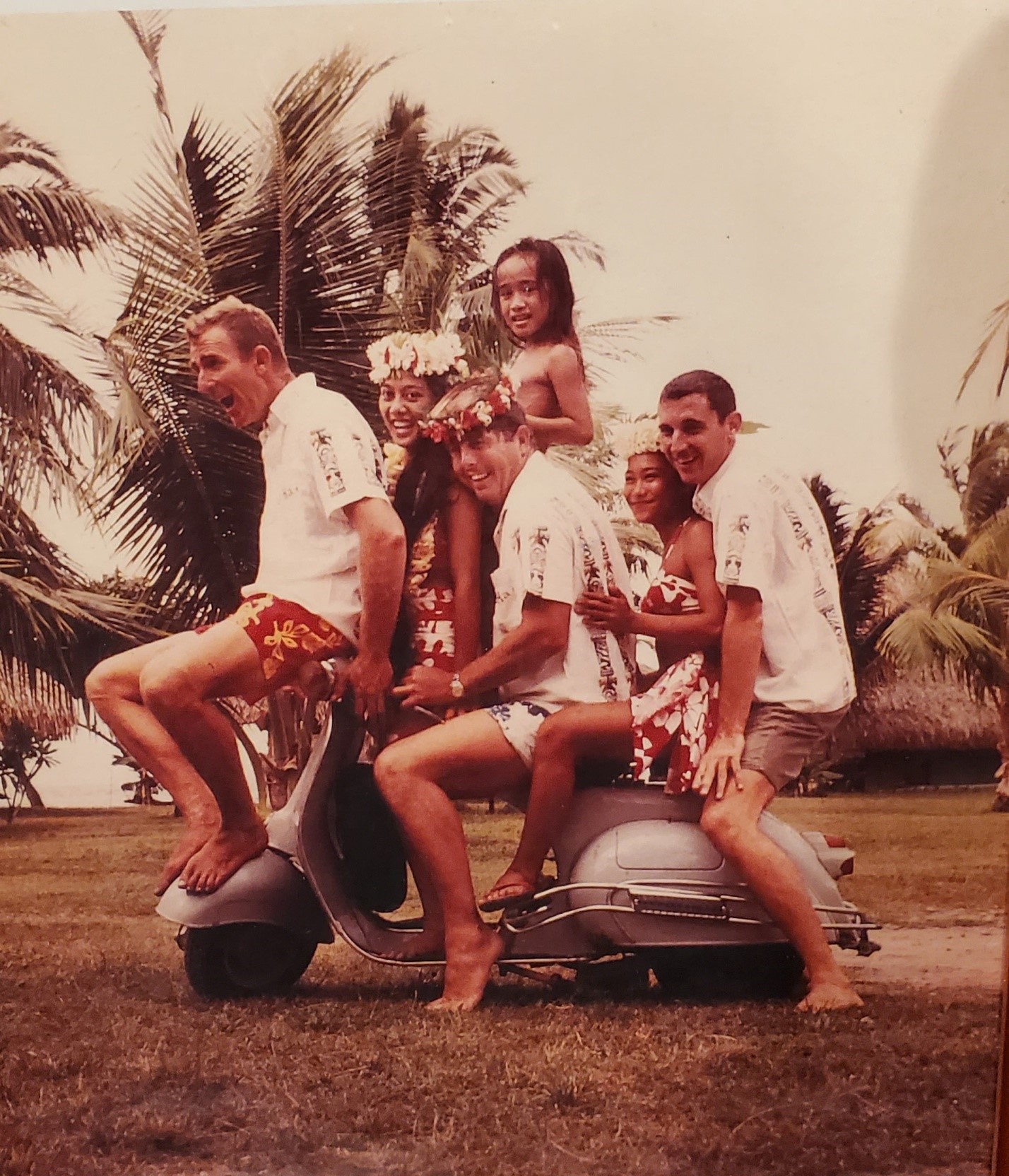
Left with an unusable farm and little cash, they noticed some haphazard bungalows on the island and convinced the owner to let them take over the rental properties as a hotel. The trio named the property the Bali Hai — a nod to Tales of the South Pacific, a novel by James Michener — and quickly earned the nickname the Bali Hai Boys. With no staff, the triumvirate handled all the hotel’s operations — cooking, bartending and entertaining the guests with fishing trips and fun.
In 1962, a group of reporters passed through Tahiti, and the Bali Hai Boys pulled out all the stops. The wooing worked, earning a seven-page spread with the headline “An Enchanted Island” in LIFE Magazine, then one of the most influential magazines in America. The magazine featured photos of the Bali Hai Boys and their hotel guests boating, swimming, enjoying music and dining together.
“It put them on the map,” Kelley said. “Americans were fascinated by this island, then people started coming, and the business started booming. It’s how they got discovered.”
Putting Overwater Bungalows on the Map
By 1967, with two new airports boosting tourism in French Polynesia, the popular hotel expanded from Moorea with a new property on the island of Raiatea, called the Bali Hai Raiatea. But the narrow Raiatea property presented some challenges. With the ocean on one side, a road on the other side and very little beach, there wasn’t much room to expand. At that time, building up wasn’t an option. That’s when Kelley got an idea: If they couldn’t build out or up, how about building over the water?
“Because of the particularities of the physical property of this hotel, they thought it’ll give people the opportunity to be over the water,” Kelley said. “It’ll be the entry-level category because they didn’t think people would want to stay there. They were surprised by the interest and that people really wanted that product.”
Getting approval from the French government presented more roadblocks. The Bali Hai Boys had to prove that the overwater bungalows wouldn’t harm the environment. They also had to convince the government that the bungalows were in keeping with the natural landscape. Kelley reminded government leaders about the rudimentary, thatched roof fishing huts on wooden stilts on the island of Huahine. Using the skills he acquired as an attorney, his daughter said, he successfully argued that the “fishing huts are very much part of the culture and landscape of the island” — just like the overwater bungalows would come to be.

After getting the green light, Kelley created the first iteration of an overwater bungalow. With shag carpets and warm wood tones, the bungalows presented a mid-century modern dream. One luxury feature, in particular, drew attention: The Tahitian Television. Kelley coined the term to refer to a window in the floor so travelers could watch the fish swim by. Though the glass panels have gotten bigger in the decades since, the term “Tahitian Television” is still used today.
“They evolved over the years and became fancier and fancier,” Kelley said. “They look nothing like the original ones.”
As a sailor and diver, the opportunity to jump into the water directly from a hotel room delighted Kelley. After the first overwater bungalows found success on Raiatea, the Bali Hai Boys built more on Moorea and some over a lake in Huahine.
From Primitive Accommodations to a Luxury Experience
Like Kelley decades before, the concept of staying not just in a hotel on the beach but literally on the water continues to enchant and dazzle travelers.
Thousands of miles away in Mexico, Senora Dolores Lopez Lira dreamed of someday traveling to Bora Bora to stay in an overwater bungalow. Eventually, she and her husband decided to build their own, a process that demanded five years of careful construction because the property is located near a massive coral reef.
The Palafitos at El Dorado Maroma in Riviera Maya, which opened in 2016, are Mexico’s first and only overwater bungalows and feature a king-sized bed, a jacuzzi, a plunge pool and an outdoor shower. Thirty cabanas with glass floors dot the landscape — a luxury experience tucked away inside each one.
“They feel very exclusive,” Lira said. “The staff makes a big difference, so they feel at home. It’s like being in your own house except you have the ocean below your feet: very relaxing.”
Walking inside the Palafitos, guests are immediately relaxed by the smell of seawater, the feeling of the ocean breeze, the sounds of seagulls and a thoughtfully designed bungalow. With demand for overwater bungalows increasing, Lira and her team will begin building more Palafitos a bit farther north on Maroma Beach. While the current properties are available for adults only, Lira said the new ones may be offered for families as well.
“After the pandemic, we realized people would rather pay more for exclusivity and living a dream,” Lira said. “That’s why we decided to start building more overwater bungalows, rather than a building.”
Evolving With a Dose of 21st-Century Innovation
Back in French Polynesia, the Four Seasons Resort Bora Bora put its own spin on the overwater bungalow, building 108 freestanding suites that combine classic features with contemporary comforts, such as breakfast arriving via canoe.
The suites also feature Tahitian-inspired decor, said hotel spokesman Brad Packer, including a thatched roof made with local pandanus leaves to shade the interior’s bedroom, living room and bathroom. Sliding doors open to the outside from each of the three areas — and in the bathroom, the soaking tubs open to the outside, as well.

First built in 2008, the entire property underwent a makeover in 2020, incorporating not just updated furniture and fixtures, but also new technology: The thatched roofs now feature solar panels — a big transformation from the region’s first low-key overwater bungalows.
“The privacy and space our guests have is unparalleled,” Packer said. “Often, guests will tuck away for a day or two and not even leave their overwater bungalow.”
The InterContinental adopted the trend, too, constructing overwater bungalows at the InterContinental Tahiti Resort and Spa, the Intercontinental Bora Bora Le Moana Resort and the InterContinental Bora Bora Resort & Thalasso Spa. They offer guests a chance to treat themselves to panoramic views, white sand beaches and lush gardens, too.
Similar to the Four Seasons Resort Bora Bora’s use of solar panels, the InterContinental Bora Bora Resort & Thalasso Spa also has sustainability in mind. Accessible only by boat, the five-star resort is home to 84 overwater villas. They’re kept cool with the world’s first private seawater air conditioning (SWAC) system, a sustainable technology that uses deep-sea water to cool the resort. The resort also features a glass-bottom, overwater chapel.
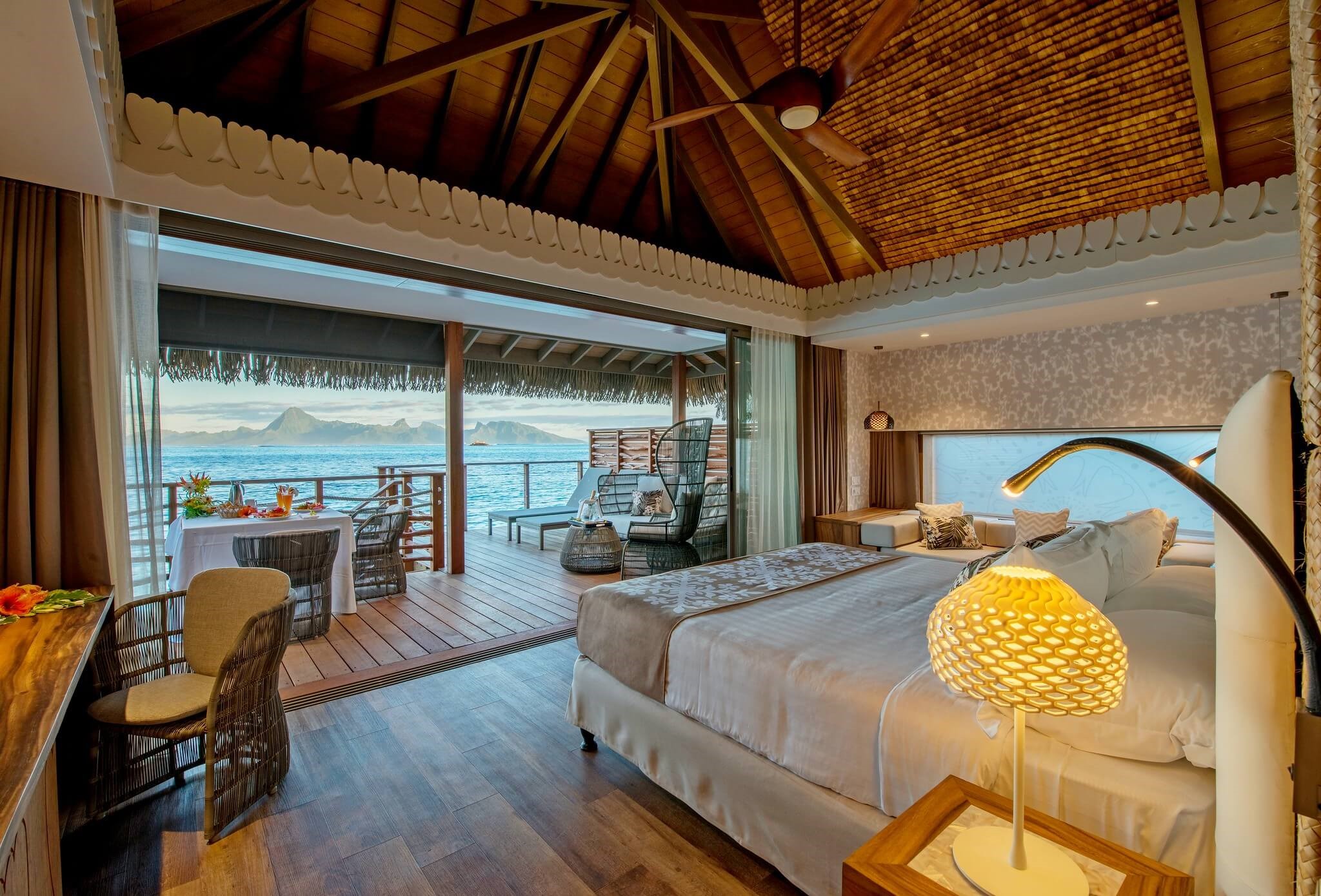
The InterContinental properties are also fighting against single-use plastic by replacing plastic straws with pasta straws. In the bathroom, they offer dispensers of COSMOS-certified natural shower gel, shampoo and conditioner. Plus, the hotel partners with local organizations committed to sustainability, including Manu, an ornithological society for the protection of birds, and the Centre for Island Research and Environmental Observatory (CRIOBE), which works to restore coral reefs.
A nod to historic overwater bungalows, the InterContinental Bora Bora Le Moana Resort takes the Tahitian Television concept to the next level. Each overwater bungalow includes a glass coffee table so visitors’ view of the lagoon won’t be inhibited. For more island entertainment on the resort, guests get access to a freshwater sand bottom pool with a waterfall, kayaking, snorkeling, a coconut show, foliage wreath braiding, Niau braiding and a demonstration on how to prepare a traditional Polynesian raw fish salad.
Necessity Is the Mother of Invention
Though the overwater bungalows in Bora Bora are the most well-known, living in the dreams of many who hope to someday travel to these slices of paradise, the accommodations can be found in Tahiti, Moorea, Raiatea, Tikehau, Mexico and more.
By the time Kelley passed away in 1998, he knew the concept had become a huge success that was spreading across the globe, his daughter said.
“During his time when he was alive, [the bungalows] didn’t get the recognition that they do now,” she said. “They were being replicated, but it was not very much talked about — the question of ‘where did they come from?’”
The Bali Hai Raiatea no longer exists, so the very first bungalows are no longer there. But the original structures do still exist at the former Bali Hai Hotel in Moorea (known today as the Manava Beach Resort Moorea). Though they’re technically the original structure and layout, the bungalows have been renovated over the years, Kelley explained.
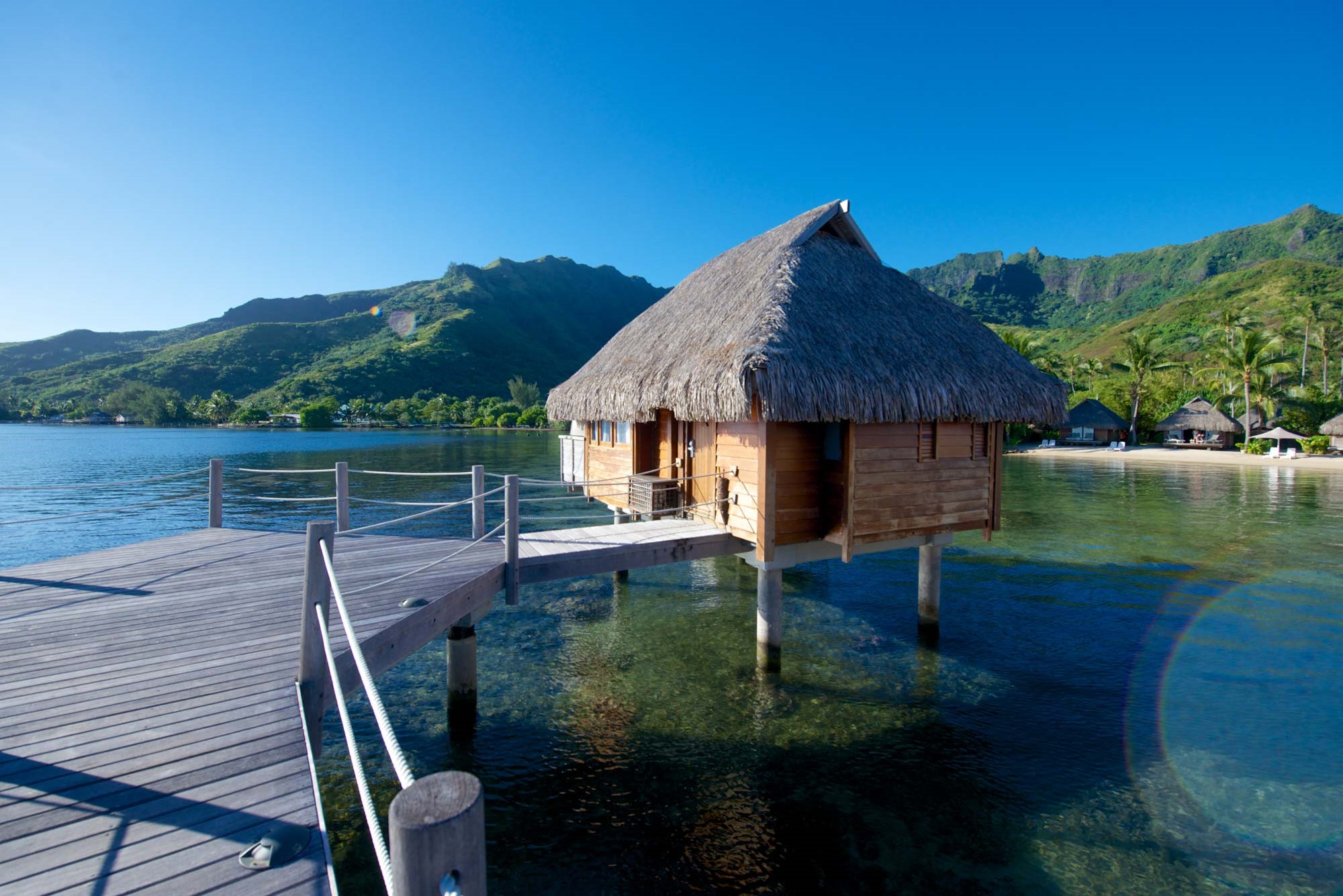
While the Moorea, Huahine and Raiatea resorts were sold in 2001, Bali Hai Boy Jay Carlisle continued to run Club Bali Hai on Moorea until about 10 years ago, Kelley said. The third member of the trio, Donald McCallum, passed away several years ago.
But Kelley certainly left a legacy in the travel industry with the invention of the overwater bungalow — as well as in his daughter’s chosen career field. She’s worked in the travel industry her entire career, and she currently runs her own company, called Manatu̅ Marketing & Sales Representation, representing two Tahiti-based clients.
To Kelley, her father was a problem-solver who felt proud to leave such an iconic legacy for the Tahitian islands.
“The best inventions are born out of need, and they find a solution for need. They just didn't think that it was going to take off like that,” Kelley said. “He always would say, ‘If I patented them, it would be a whole other story.’”
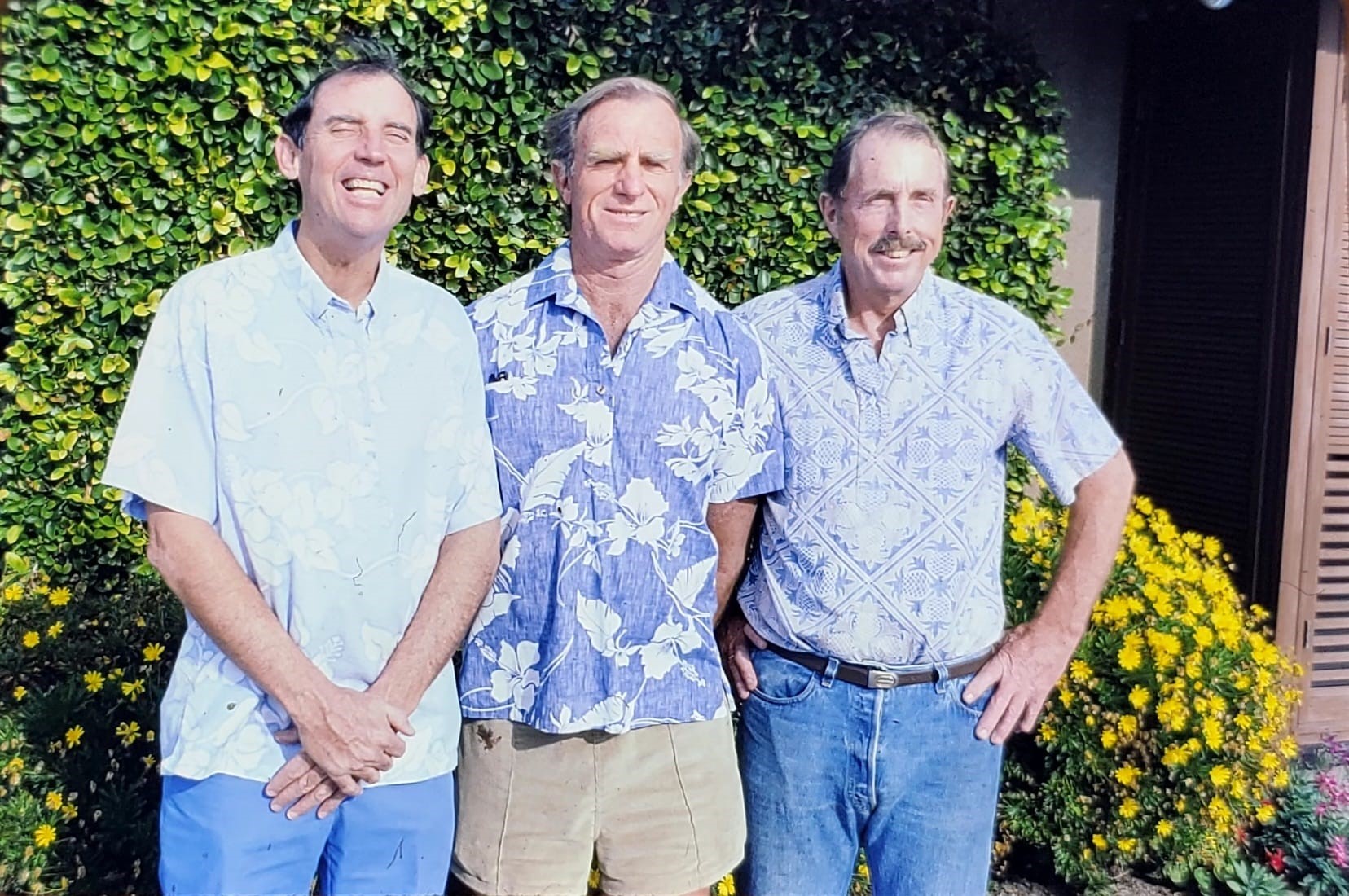
But regardless of the patent on the idea, his concept still charms visitors who want to get away from it all for a romantic excursion or a family vacation or some time alone in paradise. While they’ve grown from an entry-level option into opulent lodging where prices can stretch into the thousands per night, the character of these properties worldwide remains true to the original design.
The overwater bungalows encapsulate so much of what the Bali Hai Boys loved about the islands: being at one with the landscape, challenging themselves at watersports and coming home to gaze at the Tahitian Television.
“They loved everything about Tahiti — the people, the culture,” Kelley said. “That was a big, big thing for them.”
Originally appeared in the Summer 2023 issue of The Compass magazine


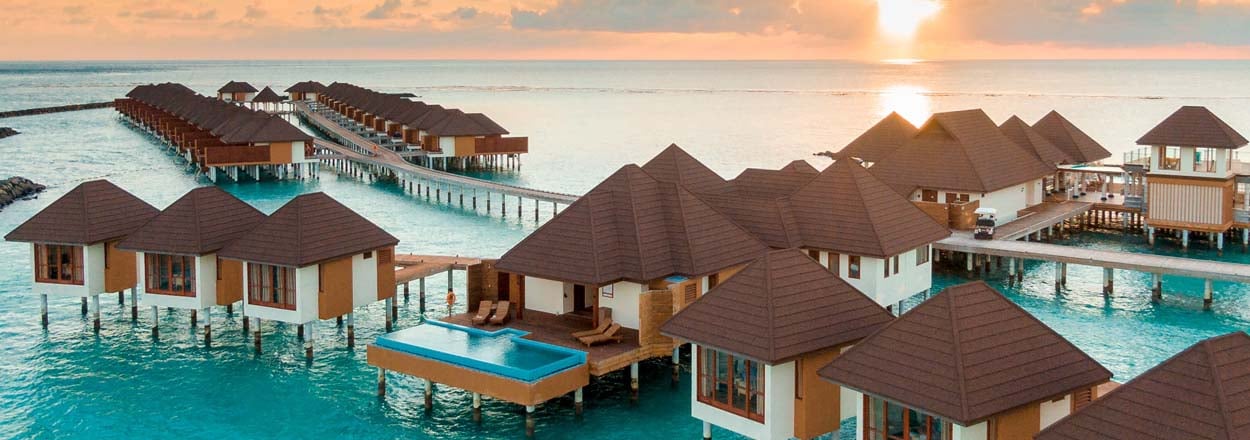



Pamala L | 04/24/24 - 08:23 PM
very interesting article!
| reply